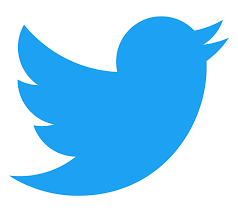There are so many brands that are so good at tweeting, with big follower bases and great engagement, but when you’re just starting it seems so daunting to even get a handful of followers, let alone create a large Twitter audience that interacts with you on a daily basis. There’s a lot of advice out there for how to write better tweets, but, to be honest, a lot of it isn’t very good. A lot of people try to copy what others are doing, or seem to miss the crucial tipping point that took a brand from nowhere to everywhere. Below we’ve made a list of the most reliable advice we have for building a Twitter audience and getting them to engage with you.
Create Eye-Catching Tweets
It should go without saying that a visually attractive tweet is more likely to get engagement than a block of text, but many brands never realize that what they really need is good photography, video, or imagery to grab eyeballs and make you stand out. When people are scrolling through their Twitter feed they often only read the first few words of a tweet, or only read the name of the Twitter account before deciding to keep scrolling. But when there’s a picture, people stop and notice. It might not be THE thing that gets them to engage with the tweet, but it captures eyeballs, for however long it takes to interpret the image and get the gist of it. And if the image is enticing, then they’ll read further.
Tag Influencers and Brands
When you’re talking about something that might be of interest to bigger brands and influencers, don’t be afraid to tag them in the tweet. While there’s a chance that they might not see it, there’s also the chance that they will and that they’ll retweet it to their followers. Influencers are always looking for content to send out, too, so when they see a tweet that is plugging them or their products, they will be interested in spreading it far and wide.
Use Calls to Action
A tweet without a call to action is a lost opportunity. Whether you’re asking people to visit a website, read an article, or merely to retweet your tweet, a call to action is an essential part of any Twitter strategy. We all are afraid of being too “salesy” and turning off our followers by constantly bombarding them with links to buy products, but if the calls to action aren’t “visit our store” but rather “read this great content”, “watch this video”, or “retweet to get entered in a contest” people are more likely to respond well. And, to be honest, we often are TOO afraid of coming off as salesy. A little selling isn’t a bad thing.
Use Polls and Ask Questions
A great way to get engagement is to ask people for their opinions. People like to know that their voice is being heard, and will often engage with questions much more quickly than they’ll retweet or even like a tweet. And the structure of the Twitter poll feature makes it so readers can’t see the results unless they actually vote, so if they’re curious what other people are thinking, they’ll vote and engage. The key is to take it a step further and respond to the answers people are sending to your questions. A personalized reply is a quick way to get the attention of a reader–and hopefully a follow and future business.
Use Creative and Trending Hashtags
You don’t need to limit your hashtags to your own products and campaigns. Keep an eye on trending hashtags and see what people are talking about that you can join in on. Of course, you don’t want to spam the hashtags–we’ve all seen people do that: using hashtags that don’t have anything to do with what they’re promoting. But if you can tie your message to a holiday hashtag or a current event, that’s a quick way to get yourself into the conversation. It doesn’t even hurt to jump on the bandwagon of hashtags that other brands are using, assuming you’re not giving free publicity to your competitors.
Keep it Simple
A tweet that is simple and straightforward is better than one that uses complex sentences and big words. This may seem like obvious advice, but there are a lot of people who are bound and determined to cram every possible thought into those 280 characters that the tweet is hard to understand and dense. Remember: people don’t spend a lot of time on each tweet when they’re scrolling through their feed; if you can communicate a thought in one or two sentences, instead of three or four, choose the former.
Respond When Someone Engages with You
As we mentioned above, there’s an easy way to get people to like you, and that’s to engage with them. Everyone on Twitter likes it when their tweets get liked, retweeted, or replied to. If someone goes out of their way to reply to you, make an effort to engage with them. Personal communication makes people more loyal and that loyalty leads to more followers and more business for you.
Don’t Tweet Too Much
It may seem counterintuitive, but tweeting too much is often worse than not tweeting at all. People have a tolerance level for the amount of times they want to hear from you, and if you cross it, it feels like spam–and no one likes spam. Studies have shown that brands do their best when they tweet one to three times a day. Once they hit four times, their engagement decreases. (This doesn’t refer to the amount of replies you can send to people who are engaging with you.)

